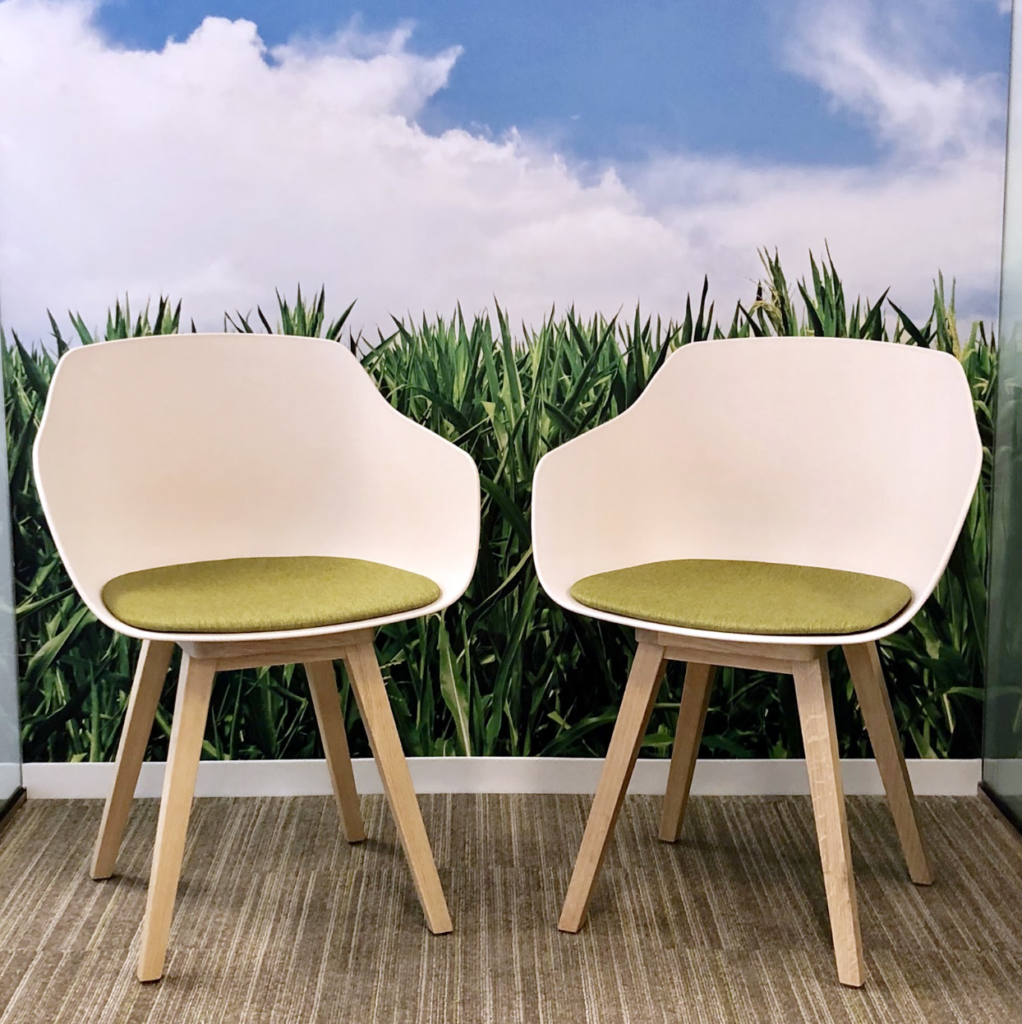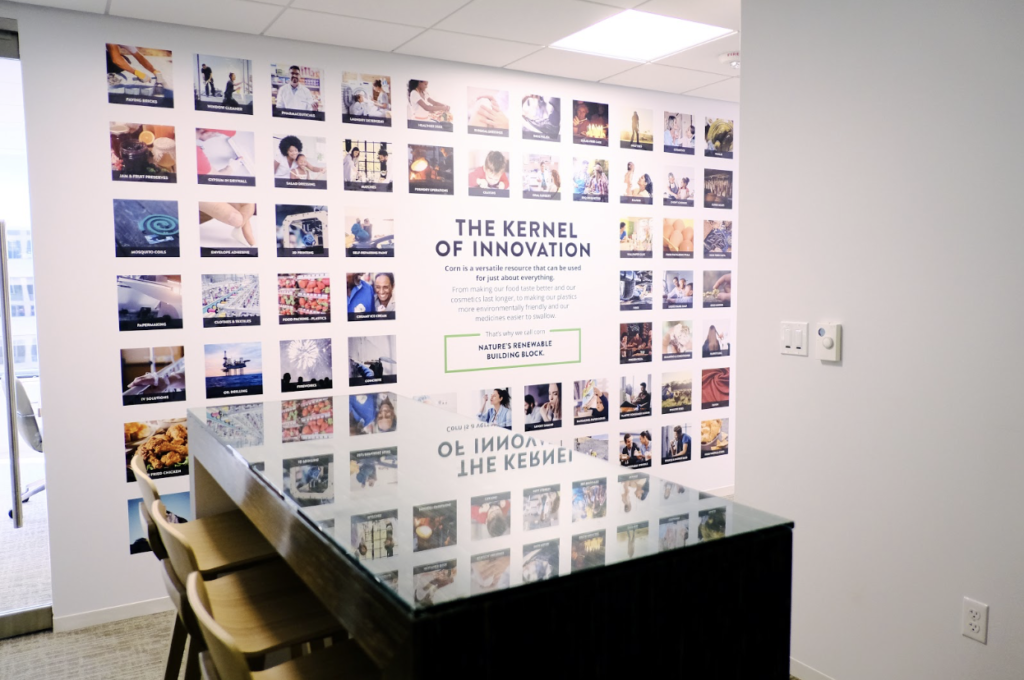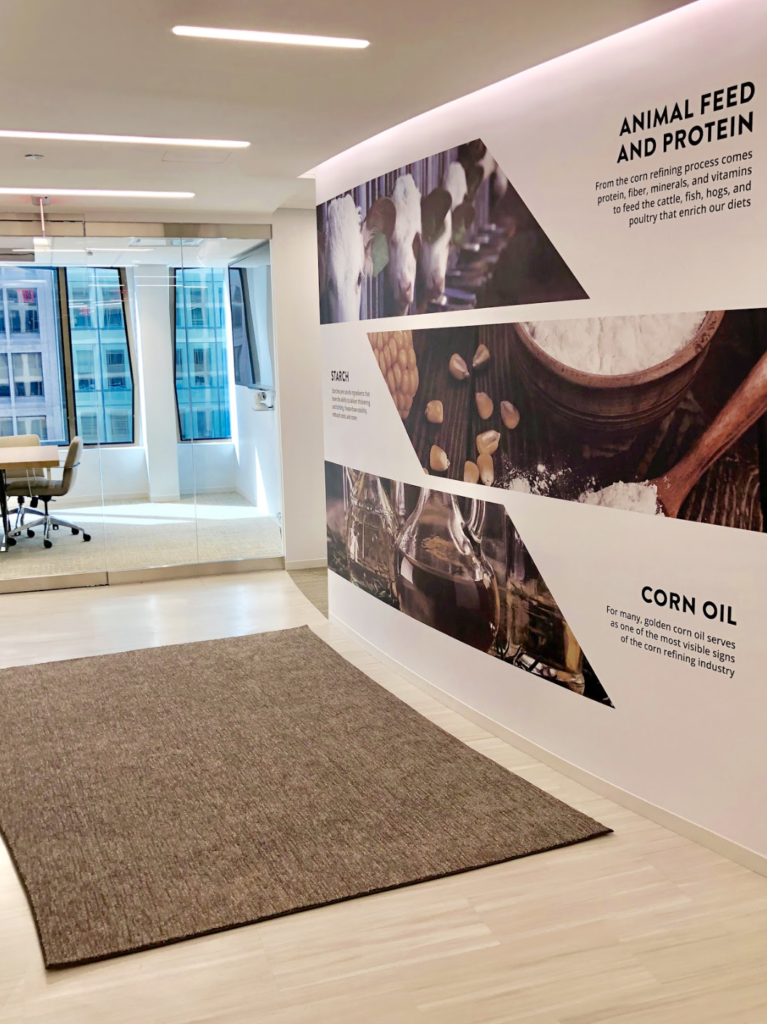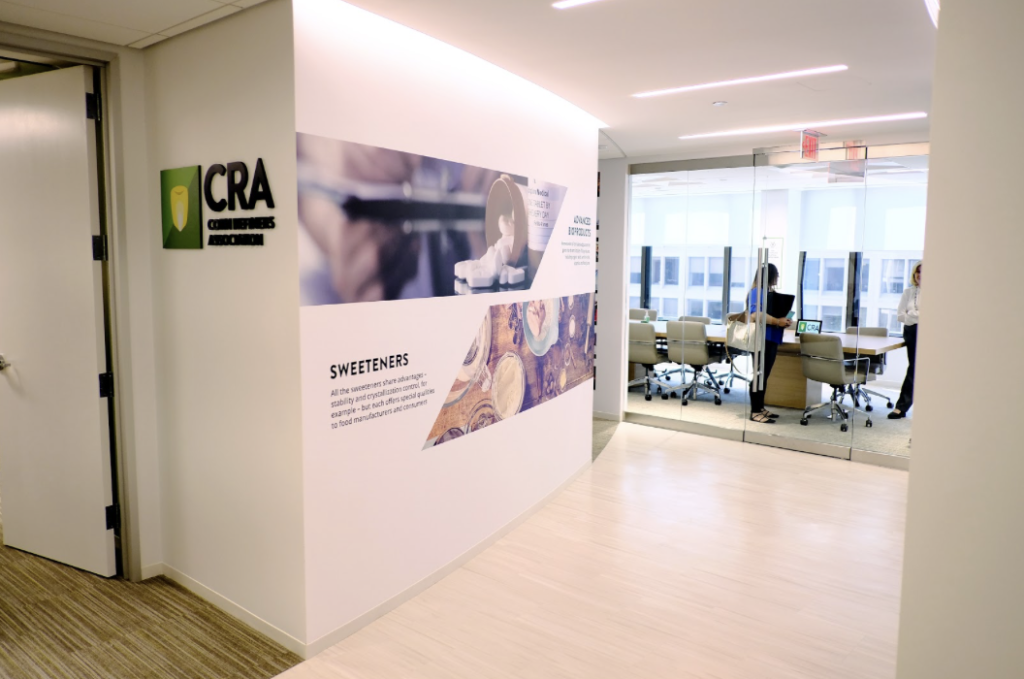Corn in Our Office
Corn products can be found everywhere, in nearly everything. See where corn and renewable products are found in our office:
CORN IMPROVES FLOORING
From the moment you step into our office, corn is hard at work. The entry tiles are 14% bio-polymer, which helps provide five times greater resistance to impact and more than two and a half times greater resistance to cracking than standard composition tile.

BIOPLASTIC CHAIRS
Our chairs are made from 10 pounds of bioplastic, sourced from cornstarch and other natural fibers. This material can be injected or extruded – providing manufacturers maximum flexibility in shaping and molding new products while providing you with maximum comfort.

SORGHUM & CORN KITCHEN ISLAND
Our kitchen island is 50% sorghum straw and stalks. Mixed with an acrylic resin and coated with a corn-based varnish for added toughness, the combination of these plant-based products creates a unique and durable surface that can also serve in other office buildings as wall paneling, countertops, furniture and even vanities, contributing to those projects’ LEED certification.

CORN CARPET
The carpet in the entry hallway is 37% corn. By replacing nylon with corn fibers, this environmentally-friendly flooring requires 30% less energy than standard carpeting. Better still, carpet retailers describe it as durable, resilient and stain-resistant.

CORN ADHESIVES EVERYWHERE
Cornstarch is found in a broad range of adhesives, including wallpaper glue and on the back of envelopes and stamps. A corn product called dextrin is a key ingredient in creating those tacky, water-activated surfaces, and was used in our offices to hang our graphic walls.

THE WALLS HAVE EARS – OF CORN
The walls in our office – and almost certainly at your own office or home – include corn. The core of most drywall is gypsum, the same material found in chalkboard chalk or plaster. That gypsum is then covered with a layer of thick paper boards similar to cardboard. What holds all these layers together? A bonding and gluing agent made of cornstarch, of course.
CORN THROUGHOUT THE KITCHEN
Polylactic acid (PLA) corn plastics were used to create our single-use utensils, plates, bowls, drinking straws and cups in the CRA kitchen – and all of these products are compostable. In addition, our reusable coasters and some of our coffee mugs are made from corn.
And when it’s time to dispose of the single-use items, they go into CRA’s composting bin with our food scraps. Many argue that composting such products is an improvement on recycling. Why? Because food scraps often cling to materials destined for the recycling bin. That contamination can prevent those materials from being recycled, ultimately creating more waste. Those worries are eliminated when composting PLA corn plastics and food. Our composting bin is picked up by Veteran Compost (a local, veteran-owned small business) and taken to their local facility – ensuring that even our waste doesn’t go to waste.
CORN IN LIQUID SOAPS
When you wash your hands in the kitchen or bathroom, once again, you’re likely using corn products. In many cases, one-quarter of the ingredients in liquid hand soap are corn-based, including corn oil and products made from bioprocessing.
BANANA COUNTERTOPS
Today, designers are seeking natural-looking materials in offices and other public environments. We’ve used plant-based ingenuity to achieve this dynamic look in our copy room, with countertops that incorporate banana peels.
PAPER PRODUCTS
Business cards, stationery, envelopes, notepads, you name it – if we ordered it from a printer, we requested 100% recycled paper and plant-based inks. The benefits of recycled paper have long been known – but adding plant-based ink is important, too. Besides being a renewable and biodegradable resource, plant-based ink requires less effort to print than traditional inks. And when it’s time to recycle this paper again, plant-based inks are easier to remove, ensuring higher-quality paper next time while also lowering the cost of the recycling process.
Even if you can’t find plant-based ink, rest easy knowing that corn is found in many traditional inks (cornstarch is added to control ink consistency).